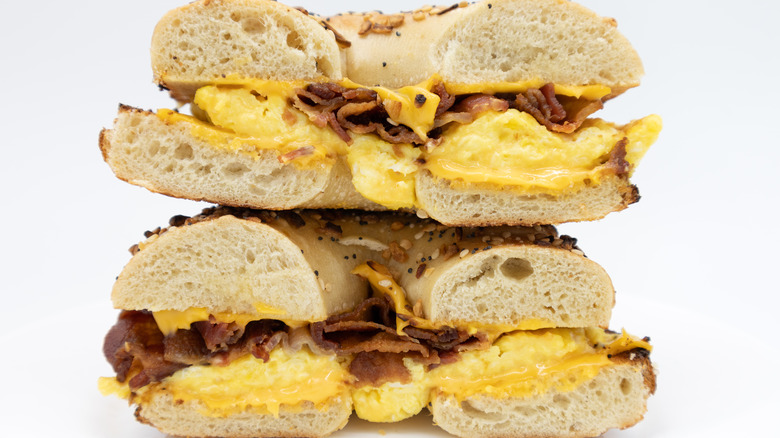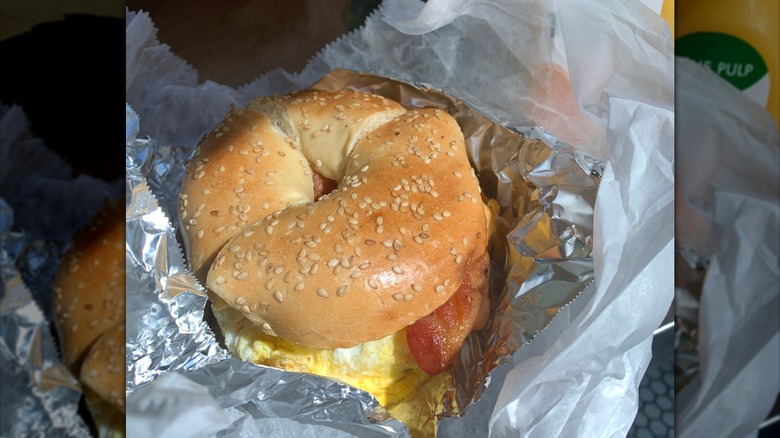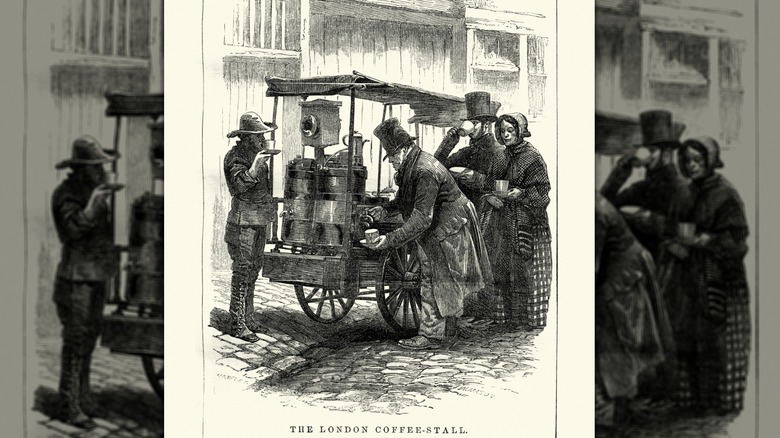Why Deli Paper Actually Matters For A Classic Bacon, Egg, And Cheese
Second only to the BLT (bacon-lettuce-tomato ) sandwich has got to be the BEC (Bacon-Egg-Cheese). This New York staple is a savory and satisfying classic that can easily fuel you through the day until lunch. But if you've ever grabbed one from the numerous sandwich shops, carts, and bodegas scattered across the city, you've probably noticed that it's always served in two halves, wrapped in deli paper.
It's a pretty trivial detail that most people won't even think about once, the deli paper wrapping actually matters a lot to the eating experience of this sandwich. The BEC is made for eating while on the go (otherwise, it would've been served on a plate with cutlery). The to-go wrapping allows you to juggle the early hours, sipping on your ristretto espresso, and scrolling through your phone without having to worry about cheese oozing onto your hands or crumbs getting everywhere. Plus, the snug deli paper helps keep your BEC warm for longer, so you can pick it up and enjoy it later, anytime and anywhere you like!
What's so great about deli paper, anyway?
Deli paper isn't your average napkin or old newspaper wrapping. As the name suggests, it's specifically crafted for wrapping foods like burgers and sandwiches. Made from thin paper treated with a layer of wax, it's both cheap and practical as a food wrapper. The wax makes a non-stick, moisture and fat-resistant layer that's perfect for wrapping oily and greasy foods like a BEC.
The non-stick is why the melty cheese in your BEC won't make a sticky mess when you unwrap it. And once it's taken off, the moisture-wicking property of the wax will allow your sandwich to be fresh-tasting without being soggy. This is why sandwich shops and bodegas far prefer deli paper over something like butcher paper, which doesn't have very strong moisture resistance and may be soaking wet with grease after a while — definitely not ideal if you plan to hold onto the sandwich for a while.
So, if you're making your own BEC at home, you won't regret investing in a box of waxed deli paper. Besides replicating that authentic NYC-style wrapping, it's simply the best way around to package a sandwich to go.
A sandwich for busy workers
Although it's a staple of NYC's food scene today, the BEC sandwich is part of a long history of breakfast sandwiches that began overseas. Particularly, it's a variation of what was called a "bap" in 19th-century Britain. A halved soft roll filled with meat, fried egg, and cheese, a bap sandwich was meant to be a handheld version of a full English breakfast, and it was a major hit among London factory workers due to its sheer convenience. You could find street vendors selling the sandwich, along with fresh coffee and other treats, to busy on-the-go workers on every street corner.
Eventually, the idea sailed the Atlantic to America in the early 20th century and caught on big time, particularly among railroad workers who needed a cheap meal easy to eat on the go. Interestingly, this precursor to the BEC was served to people on waxed paper, a precursor to waxed deli paper!
Over time, other variations emerged, including the "Denver Sandwich," which featured a Denver omelet — an omelet with diced ham, onion, and peppers — between two halves of soft bread. In New York, though, people stuck with the basics: a soft bagel or roll loaded with melted American cheese, crispy bacon, and, of course, a fried or scrambled egg. Today, the BEC has special significance in the city's food culture and you can find everyone from high schoolers to busy office workers munching on a BEC — perfectly held together and kept warm in deli paper — as they rush to the train or run to school.


